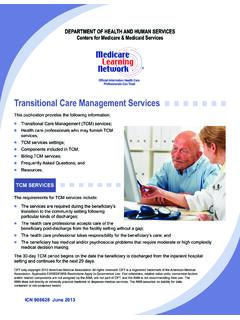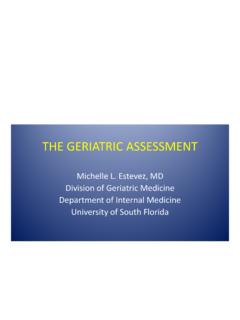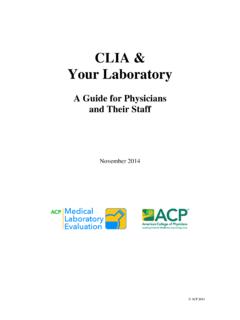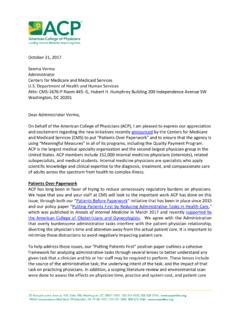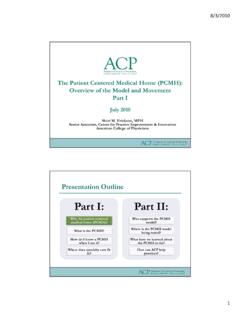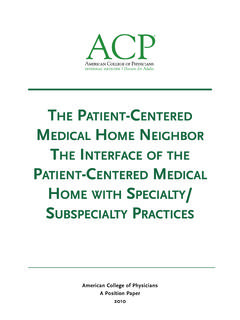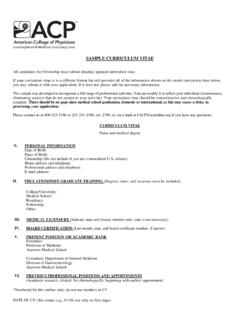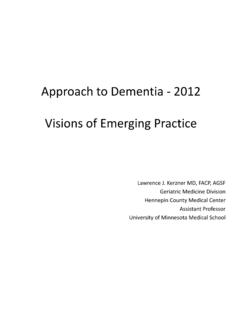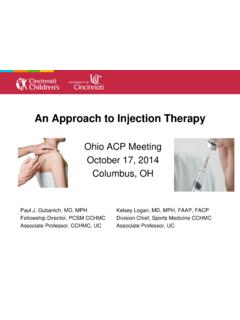Transcription of Ethical Implications of the Electronic Health Record: In ...
1 Ethical Implications of the Electronic Health Record: In the Serviceof the PatientLois Snyder Sulmasy, JD1, Ana Mar a L pez, MD, MPH, FACP2,3,4,5, and Carrie A. Horwitch, MD, MPH,FACP6, American College of Physicians Ethics, Professionalism and Human Rights Committee1 American College of Physicians, 190 North Independence Mall West, Philadelphia, PA, USA;2 Health Equity and Inclusion, UUHS, Salt Lake City, UT,USA;3 Collaboration/Engagement Team, Center for Clinical and Translational Science, University of Utah Health Sciences, Salt Lake City, UT, USA;4 Huntsman Cancer Institute, Salt Lake City, UT, USA;5 University of Utah School of Medicine, Salt Lake City, UT, USA.
2 6 Virginia Mason Medical Center,University of Washington, Seattle, WA, Health records (EHRs) provide benefits for pa-tients, physicians, and clinical teams, but also raise eth-ical questions. Navigating how to provide care in the dig-ital age requires an assessment of the impact of the EHRon patient care and the patient physician should facilitate patient care and, as an essentialcomponent of that care , support the patient physicianrelationship. Billing, regulatory, research, documenta-tion, and administrative functions determined by the op-erational requirements of Health care systems, payers,and others have resulted in EHRs that are better able tosatisfy such external functions than to ensure that pa-tient care needs are met.
3 The profession has a responsi-bility to identify and address this mismatch. This positionpaper by the American College of Physicians (ACP) Ethics,Professionalism and Human Rights Committee does notaddress EHR design, user variability, meaningful use, orcoding requirements and other government and payermandates per se; these issues are discussed in detail inACP s Clinical Documentation policy. This paper focuseson EHRs and the patient physician relationship and pa-tient care ; patient autonomy, privacy and confidentiality;and professionalism, clinical reasoning and training.
4 Itexplores emerging Ethical challenges and concerns forand raised by physicians across the professional lifespan,whose ongoing input is crucial to the development anduse of information technology that truly serves Intern MedDOI: Society of General Internal Medicine 2017 INTRODUCTIOND isruptive innovations are a double-edged sword, bringingboth opportunity and risk. The Electronic Health record(EHR), for example, simultaneously facilitates and compli-cates the delivery of Health Laennec introduced the stethoscope in 1816,disrupting the tradition of direct (skin-to-skin) contact inlistening to the patient s heart and lungs, it had physicians thought the innovation would be a detrimentto care .
5 This led to a reexamination of ways to sustain thepatient physician relationship, and the subsequent integrationof the technology with other forms of therapeutic touch,conversation, and , technologies that aid the delivery of care are ubiq-uitous. EHRs have demonstrated value in features such aslegible information, accurate prescriptions, remote access toinformation, and prevention reminders. Many patients useportals to check information and communicate with EHRs also bring unintended The primary goal of EHR-generated documentationshould be concise, history-rich notes, andtechnologyshouldsupport care goals in the most efficient manner possiblewithout losing the humanistic elements of the record thatsupport ongoing 4 Computers are tools.
6 Theydo not fundamentally alter the goals of medicine or the ethicalresponsibilities of the development, however, has focused not on capturingthe patient s story and physician s thought processes and careplans, but on billing, administrative, and regulatory 6 Documentation requirements have led to check-box and drop-down menu shortcuts; repetitive and sometimesinaccurate information is some functionscan enhance the speed and structure of documentation, unrea-sonable requirements can impose their own policy bodies have recognized the potential forhealth information technology (HIT)
7 To improve care , theyhave also cautioned that HIT does not effectively support thediagnostic process and may contribute to example, challenges include problems with usability, poor integrationinto clinical workflow, difficulty sharing a patient s healthinformation, and a limited ability to support clinical reasoningand identification of diagnostic errors in clinical practice. 8 These challenges give rise to Ethical concerns that are not justthe problem of HIT professionals, and must be addressed bythe medical profession. The adoption of EHRs causes signif-icant changes in the day-to-day experience of those realize the promise of EHRs, more work isneeded.
8 9 Received September 9, 2016 Revised February 2, 2017 Accepted February 23, 2017 Moving forward, we would do well to remember the wordsof Eliot: "Where is the wisdom we have lost in knowl-edge? Where is the knowledge we have lost in information?"10 POSITION 1: EHRS AND COMPUTER USE SHOULDFACILITATE PATIENT care , SUPPORT PHYSICIANETHICAL DUTIES, AND SUPPORT THE PATIENT PHYSICIAN RELATIONSHIPP atient Physician RelationshipsIt seems obvious that patient care should center on interactionwith the patient. The design and use of EHRs can facilitatepatient education during a visit, but EHRs can also be an evengreater distraction than the paper record, diverting the physician sattention away from the must put the wel-fare and best interests of the patient first, and effective commu-nication is critical to have called the computer the third party 13in the exam room, with its introduction into therelationship9, 14, 15having the power to enhance or impedecommunication and relationship-building.
9 In the hospital setting,reliance on computers is increasing16 leading to a focus on the iPatient. 11 All encounters require sufficient time and attention for opendiscussion of patient listening andrelationship-building can lead to adverse outcomes. Physiciansfocused on difficult-to-use data requirements can miss psycho-social and emotional cues essential for contextual understand-ing, differential diagnosis, management, and ultimately, for com-passionate, patient-centered care . 13 Distractions and time pressures are not new, but technologymay cause them to be more pronounced.
10 Heavy use of computersby clinicians in safety-net clinics was associated with communi-cation barriers and less satisfied listening anddiscussion, eye contact, and thorough physical examination helpbuild therapeutic alliances. Patients feel better cared for and moreconfident in patient physician partnerships in care . The physicalexam and the power of touch changes the dynamic of theencounter, often empowering patients to speak in theambulatory setting, for every hour physicians provide direct care ,nearly two hours is spent on EHRs and administrative allow the patient and physician to view thescreen for positioning the computerscreen and maintaining eye contact can help, along withpatient-centered approaches,20tools for improving non-verbal communication,21and Frankel s mnemonic best prac-tices device, POISED (prepare, orient.)

